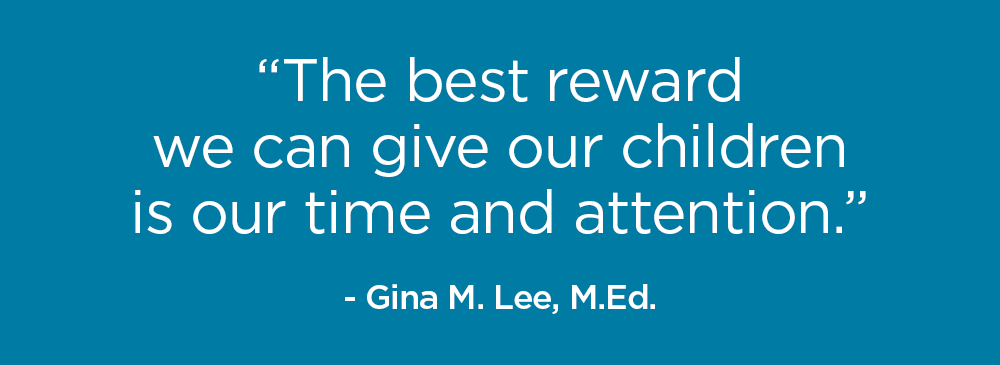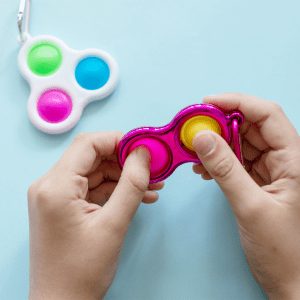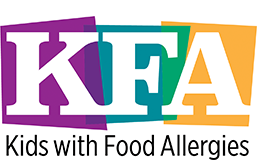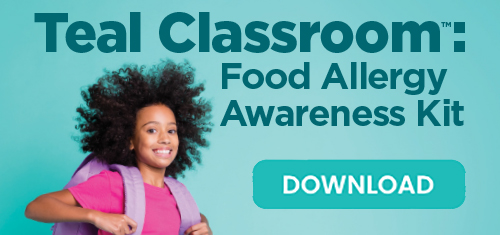Living with Food Allergies

Non-Food Rewards for Children With Food Allergies
The Centers for Disease Control and Prevention’s (CDC) Voluntary Guidelines for Managing Food Allergies in Schools and Early Care and Education Programs recommends the “use of non-food incentives for prizes, gifts, and awards.”
Other well-respected health organizations and institutions recommend this approach as well.

While a shift to non-food incentives may require slight changes to school traditions, there are potential benefits. This practice can help ease anxiety and the chance of accidental exposure to allergens for children with food allergies. Below is a list of low cost or no cost rewards that can be used instead of food.
Closed
No Cost Rewards

- Allow extra time for reading, computer, art, games
- Enjoy class lesson or reading time outside
- Allow child to choose class activity or game
- Give a “no homework” pass or no homework for the class
- Present certificate of achievement
- Give free time at the end of the day
- Have a class sing-along
- Create class coupons with special privileges
- Allow child to choose music to play for the class
- Child or teacher can read a favorite book to the class
- Allow child to wear something fun to school according to a theme: pajama day, hat day, sports day, color day, pattern day (for class or grade)
- Allow child to earn prizes or gift certificates donated by local businesses
- Have a reading party (children bring blankets to sit on and read favorite books)
- Allow child to choose a poem, short story, or joke to read to the class
- Create a class story (go around the room and each child contributes a line to the story)
- Allow child to use a camera or iPad to create a class or personal picture collage of school activities
Low Cost Rewards

Verify that these items do not contain allergens for any of the students. For example, some of these items are made of latex and should not be offered to a student with a latex allergy.
- Awards or medals
- Books, bookmarks
- Bracelets
- Bubbles
- Class craft
- Crayons
- Finger puppets
- Glow sticks
- Grab bag
- Necklaces
- Notepads
- Pencils
- Pencil cases, grips, sharpeners, toppers, erasers
- Playing cards
- Ribbons
- Rings
- Rubber balls
- Stickers
- Sticky notes
- Stress balls
- Tote bags
- Trinkets/toys: slinkies, small figurines, spinning tops, yo-yos
“The best reward we can give our children is our time and attention.” -Gina M. Lee, M.Ed.
Rewards from the Heart

- Give the child extra attention: ask about outside interests, smile, or give a pat on the back
- Give verbal praise that is specific
- Allow child to sit by a friend
- Attend an after-school activity of the child’s to show you care
- Allow child to share a special item or talent with the class
- Make child the “Student of the Day,” “Super Kid,” “Line Leader,” or “Star of the Day”
- Allow child to sit in a special seat
- Allow child to write or draw on the board
- Allow child to do class (or school) morning announcements
- Recognize child/class achievements during morning announcements, in a school newsletter, on a school (or class) bulletin board or on the school website
- Allow child to help out with a lesson or be a teacher’s helper (hand out papers, put away supplies, etc.)
- Give child an important responsibility
- Have each classmate write a compliment about the child
- Create compliment book for the child to bring home (index cards on a ring work well)
- Allow child to read or help out in another class or a younger class
- Choose an incentive based on interest (i.e. allow a child that likes to draw to create a class or school sign/poster)
- Write a positive note directly to the child or send a positive note home to child’s parents
- Allow child to eat lunch with a favorite teacher, principal or other staff member
- Allow child to invite a special guest to the classroom (as a guest reader or to play a game with the class)
- Donate the child’s favorite game or book to the class
- Have classmates sign a t-shirt, Frisbee, or ball for the child
Active Awards

- Allow child to pick a song for a class “dance break”
- Allow class to perform a skit
- Allow child to make deliveries to office or other rooms
- Pick class game to play outside: kick ball, whiffle ball, capture the flag, basketball
- Play inside class games: 7-up, charades
- Allow time for fun outside activities: Frisbee, hula-hoop, jump rope, skipping game
- Create an obstacle course
- Allow child to lead Simon Says
- Have a class scavenger hunt based on a curriculum topic
- Create a walking club during recess
- Allow child to play a game during recess with a staff member
- Allow extra recess
- Host a day of educational activities, games and experiments
- Play curriculum hopscotch (Instead of throwing a rock before you jump, the child must correctly answer a math fact or other fact from a lesson before moving)
References
1. Alliance for a Healthier Generation. Non-Food Rewards. https://www.healthiergeneration.org/take-action/schools/wellness-topics/nutrition-services/non-food-rewards. (Retrieved July 27, 2021)
2. Centers for Disease Control and Prevention. 2018. Adolescent and School Health: Childhood Obesity Facts. https://www.cdc.gov/obesity/data/childhood.html. (Retrieved July 27, 2021)
3. Centers for Disease Control and Prevention. 2014. Adolescent and School Health: Physical Activity Facts. https://www.cdc.gov/healthyyouth/physicalactivity/facts.htm. (Retrieved July 27, 2021)
4. Center for Science in the Public Interest. Support Healthier School Food. https://www.cspinet.org/schoolfood/. (Retrieved July 27, 2021)
5. Centers for Disease Control and Prevention. 2013. Voluntary Guidelines for Managing Food Allergies In Schools and Early Care and Education Programs. https://www.cdc.gov/healthyschools/foodallergies/pdf/20_316712-A_FA_guide_508tag.pdf. (Retrieved July 27, 2021)
Medical Review: October 2014. Updated August 2021.













